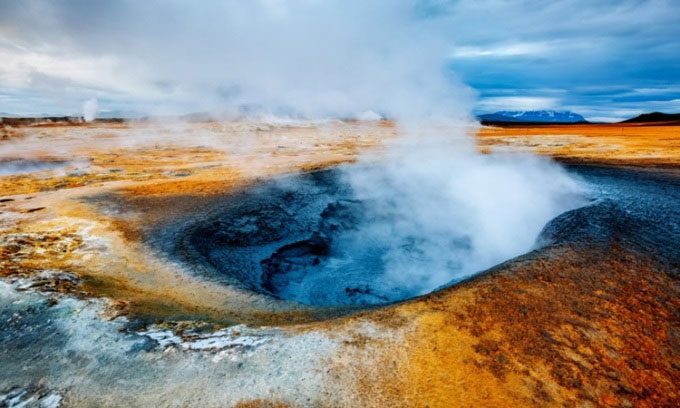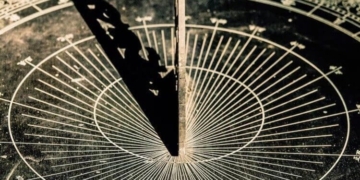Iceland Could Make History in Science by Drilling to a Volcano’s Magma Chamber in 2026
In 2026, the Krafla Magma Testbed (KMT) project in Iceland will construct a borehole to the magma chamber of the Krafla volcano located in the northeastern part of the country. The magma chamber lies at a depth of 1.6 to 3.2 kilometers beneath the surface and will provide limitless geothermal energy for households and buildings in Iceland, according to a report by Mail on January 4. Despite the extreme temperatures of magma (1,300 degrees Celsius), experts believe that the project is safe and will not trigger volcanic eruptions in the region. “This is the first journey to the center of the Earth”, said project manager Björn Þór Guðmundsson.

Krafla Volcano in northeastern Iceland. (Photo: Fun Iceland).
Iceland has been harnessing geothermal energy, the heat generated within the Earth, to run turbines and produce electricity. The geothermal power plants in Iceland drill wells deeper than 1.6 kilometers to utilize steam heat. The steam passes through turbines, causing them to spin and generate electricity, but this method only captures a small fraction of the available energy. Additionally, geothermal energy is relatively cooler compared to the heat from fossil fuel power plants (250 degrees Celsius compared to 450 degrees Celsius). This lower temperature is inefficient. Instead, tapping into the higher temperatures from the magma chamber could lead to a more abundant energy supply.
“The goal of generating energy from superheated geothermal sources near magma is that these wells produce more energy than conventional wells. We can drill one well instead of ten wells for the same power output.” Guðmundsson explained.
Krafla, one of the most active volcanoes in the world, erupted nine times from 1975 to 1984. Currently, scientists can locate the magma chamber of Krafla beneath the caldera using seismometers, at a depth of about 2 kilometers.
Since the late 1970s, there has been a geothermal power plant in Krafla operated by Landsvirkjun, the largest power company in Iceland. The company has 33 wells tapping into geothermal energy in the area, but none go directly to the magma chamber. Drilling to the magma chamber is not the issue, as many other companies worldwide have attempted to drill much deeper. The challenge lies in what will happen to the drilling equipment once it reaches the magma chamber.
In 2009, during the Iceland Deep Drilling Project, experts accidentally drilled into a magma reservoir at Krafla. However, the drilling had to stop after reaching a depth of 2,100 meters when the drill bit came into contact with magma and corroded the steel casing of the well. The experiment proved that drilling to the magma chamber is safe and does not lead to eruptions if the right equipment is used. “One of the main objectives of KMT is to develop wells with materials that can withstand such conditions.” Guðmundsson said.
In 2026, the KMT project will commence near that initial borehole and begin the journey to the magma chamber, which could take two months. If successful, scientists will add sensors into the magma chamber to measure pressure, aiding in eruption prediction. However, this will involve developing sensors that can withstand the extreme heat, pressure, and acidity of the magma. Subsequent experiments may involve pumping fluids into the chamber to alter pressure and temperature, and measuring the results.




















































